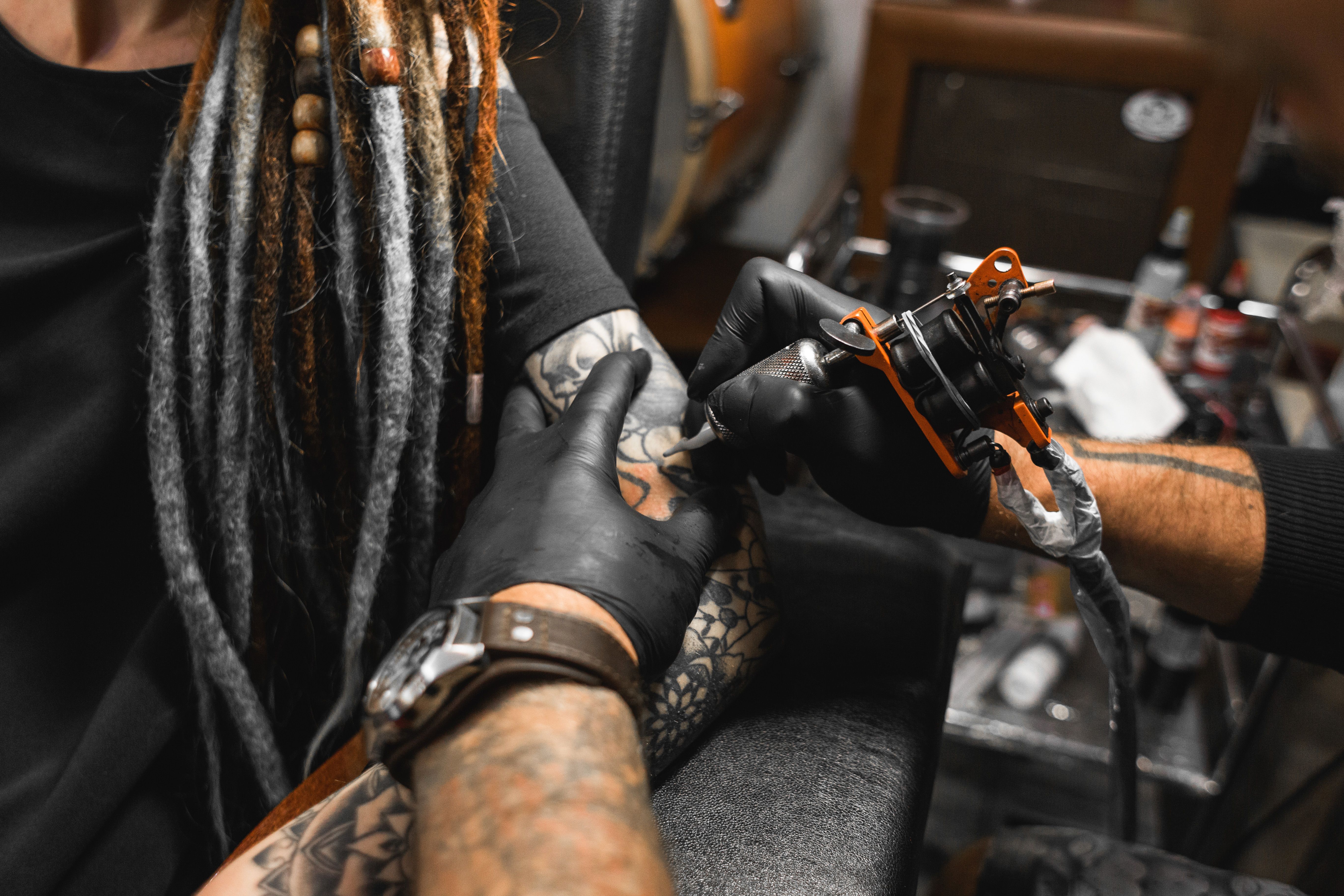News
Article
Tattoos May Be Associated With Increased Risk of Rare NHLs
Author(s):
Key Takeaways
- Tattoos may increase the risk of certain NHLs, particularly mature B-cell types, after 10 years or more.
- The study's small sample size and overlapping confidence intervals limit the precision of risk estimates.
Despite found associations, due to small sample sizes the researchers suggest readers interpret their findings with caution.
Getting a tattoo may increase the risk of certain types of non-Hodgkin lymphoma (NHL), suggested by findings from a small case-control study published in Cancer Medicine.1
New evidence suggest a slight connection between receiving a tattoo and elevated cancer risks | image credit: xartproduction - stock.adobe.com

The present researchers, while exercising caution due to a small sample size, outline findings that indicate a tattoo, which nearly 1 in 3 adults in the US report having2, and this increased cancer risk could be driven by long-term exposure to carcinogens alongside inflammatory and immune responses.
In particular, patients aged between 20 and 60 years who had received a tattoo 10 or more years prior had an increased risk of rarer mature B-cell NHLs (OR, 2.64; 95% CI, 1.23-5.68). This group of B-cell NHLs included marginal zone and mantle cell lymphomas, among others that had too small of sample sizes for analyses specific to the subtype.
The ≥10 year-period of having a tattoo was also associated with an increased risk of myelodysplastic syndromes (MDS; OR, 1.48; 95% CI, 0.40-5.41) and chronic myeloid leukemia (CML; OR, 1.24; 95% CI, 0.45-3.43).
“Some known risk factors for hematologic cancers appear to have a 10- to 20-year latency. For example, some environmental pollutants had a detectable effect on NHL risk starting at least 11 years after exposure,” wrote the group. “Therefore, it is reasonable to evaluate a similar latency for tattooing exposures and hematologic cancer risk.”
The analysis included 820 patients with diagnosed lymphoid or myeloid malignancies between 2019 and 2021, and more than 800 controls. Participnts ages ranged from 18 to 79 years. Among the group of patients aged 20 to 60 years, there were no apparent associations between getting a tattoo and an increased risk of HL (OR, 0.70; 95% CI, 0.36-1.34), NHL (OR, 1.03; 95% CI, 0.71-1.49), or myeloid neoplasms (OR, 0.99; 95% CI, .58-1.68) overall.
Regardless of time passed since getting a tattoo, there was an increased risk associated with B-cell NHLs (OR, 2.06; 95% CI, 1.01-4.20), albeit lower than the risk associated with having a tattoo for 10 years or longer. An increased risk was also observed among patients with chronic lymphocytic leukemia/small cell leukemia (OR, 1.47; 95% CI, 0.60-3.61).
Although over 800 patients were included in the study, the researchers flagged imprecise estimates that stemmed from small sample sizes. These figures were affiliated with certain cancer subtypes and racial and ethnic groups.
“As hematologic cancer subtypes are rare, we had small sample sizes for several groups, which led to imprecise estimates. This is a common limitation of studies of hematologic cancer subtypes, but research is urgently needed to elucidate the etiology of these under-studied cancers,” the researchers emphasized. “Almost all of the risk estimates we observed included 95% CIs which overlapped null, and it is possible that any of the observed associations could be due to chance.”
In a larger case-control study published earlier this year, researchers found a 21% (95% CI, 0.99-1.48) increased risk of lymphoma associated with having a tattoo among nearly 1400 people with the disease and 4200 controls. The increased risk was highest (81%; 95% CI, 1.03-3.20) within 2 years of having the tattoo, dropped between 3-10 years, before rising again to a 19% (95% CI, 0.94-1.50) increased risk after 11 or more years.3
References:
- McCarty RD, Trabert B, Kriebel D, et al. Tattoos and risk of hematologic cancer: a population-based case-control study in Utah. Cancer Med. Published online September 12, 2024. doi:10.1002/cam4.70260
- Pew Research Center. 32% of Americans have a tattoo, including 22% who have more than one. August 13,2023. Accessed October 31, 2024. https://www.pewresearch.org/short-reads/2023/08/15/32-of-americans-have-a-tattoo-including-22-who-have-more-than-one/
- Nielsen C, Jerkeman M, Jöud AS. Tattooes as a risk factor for malignant lymphoma: a population-based case-control study. EClinicalMedicine. 2024;72:102649. doi:10.1016/j.eclinm.2024.102649.





